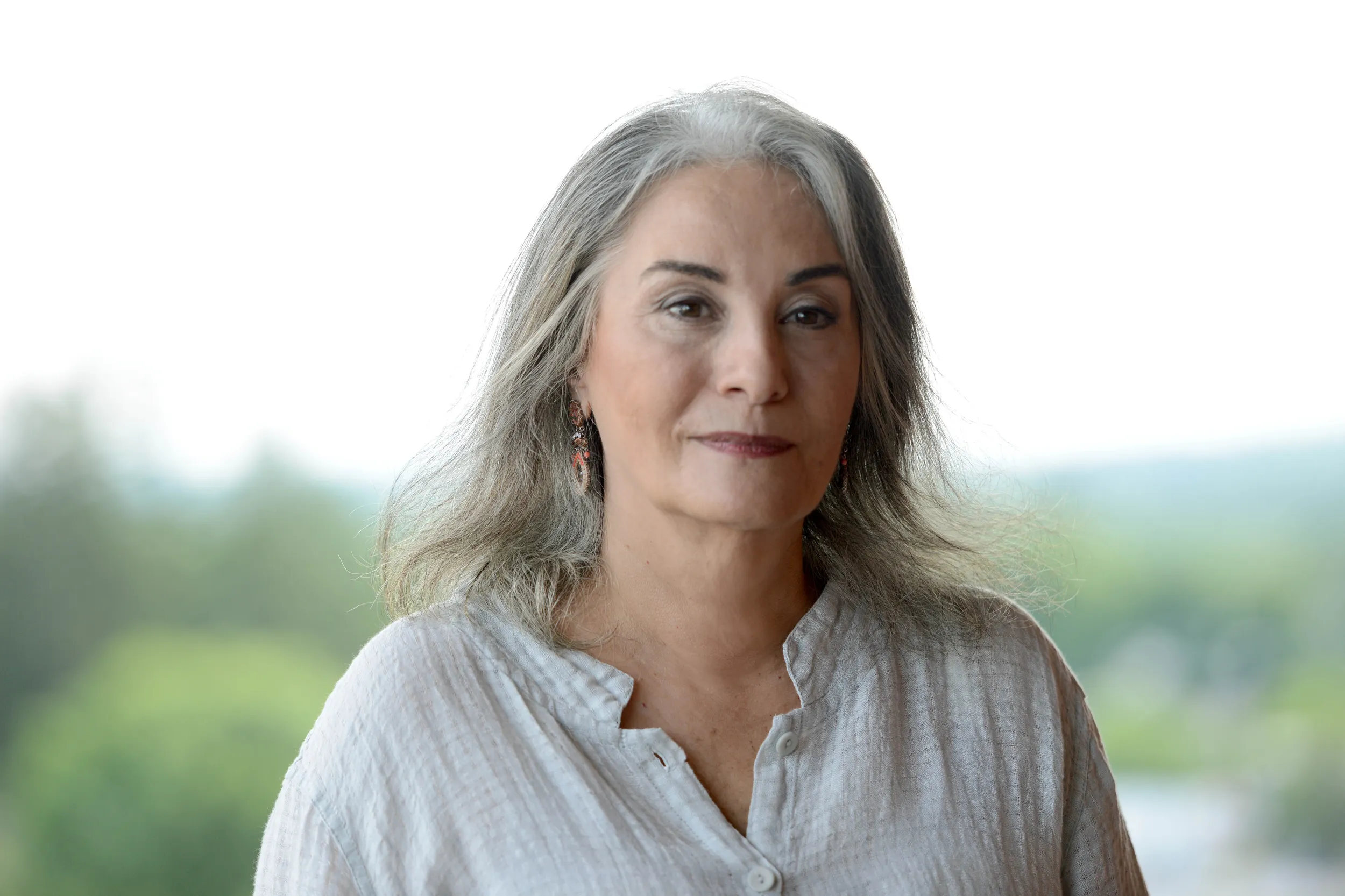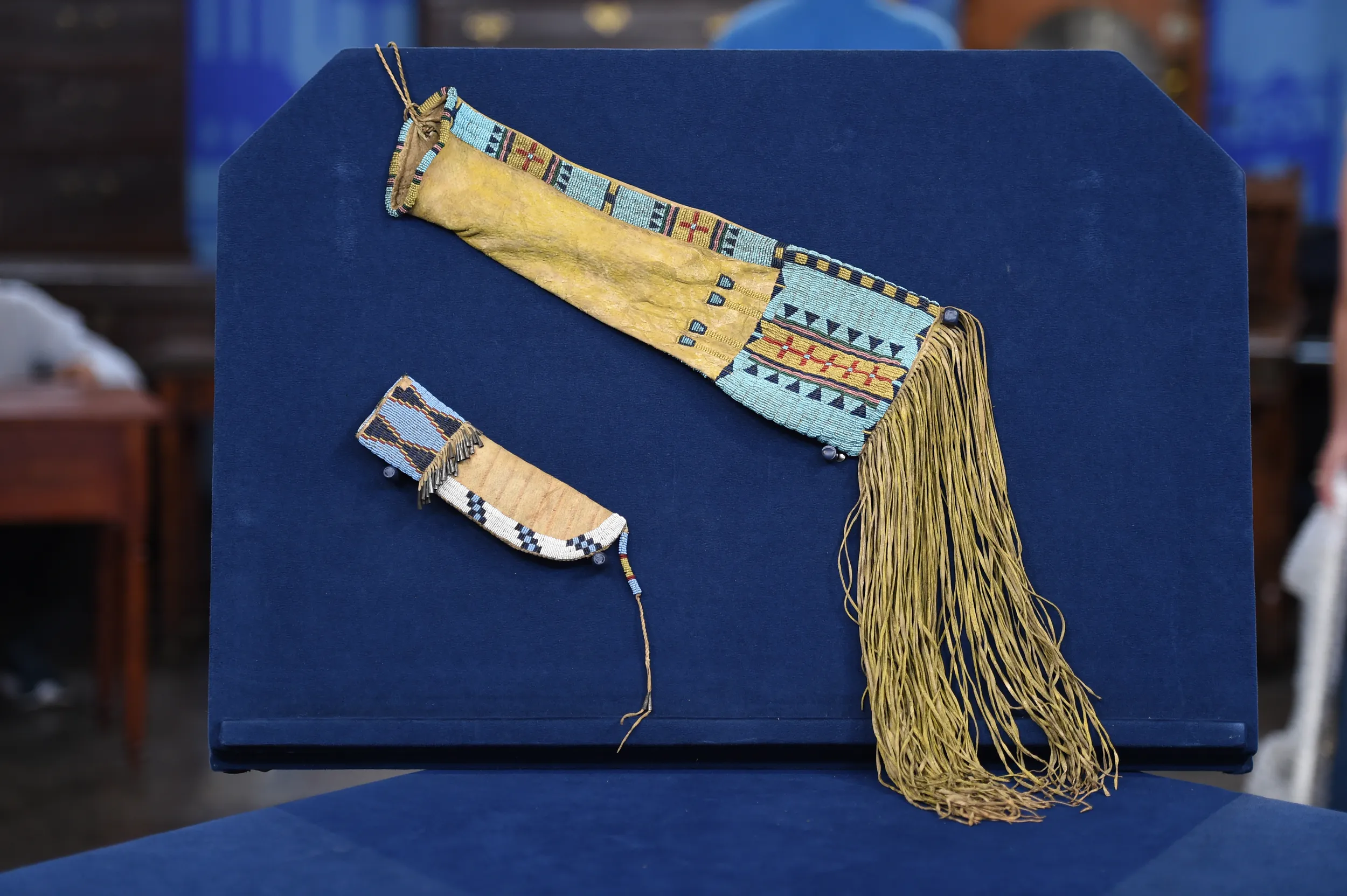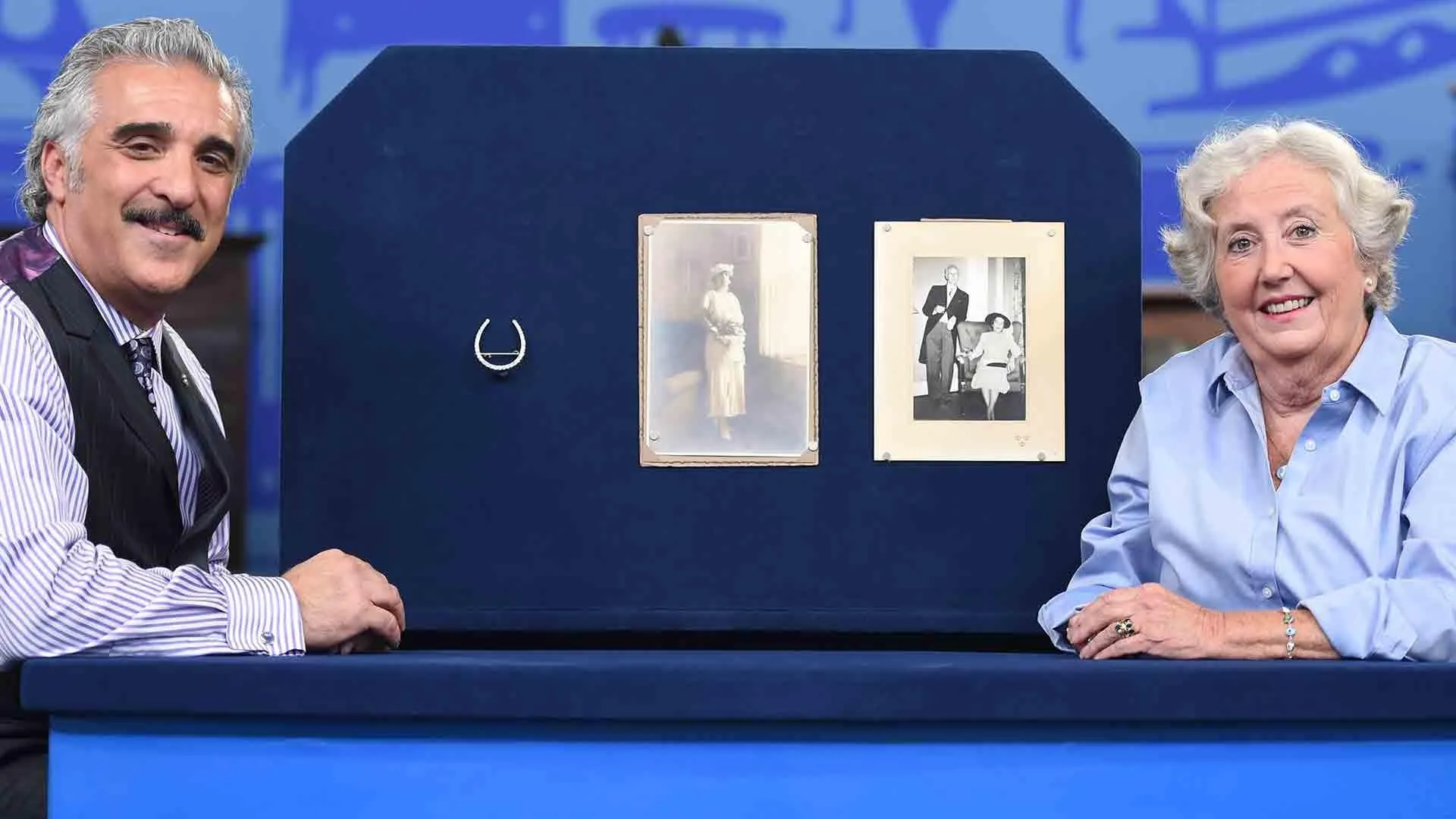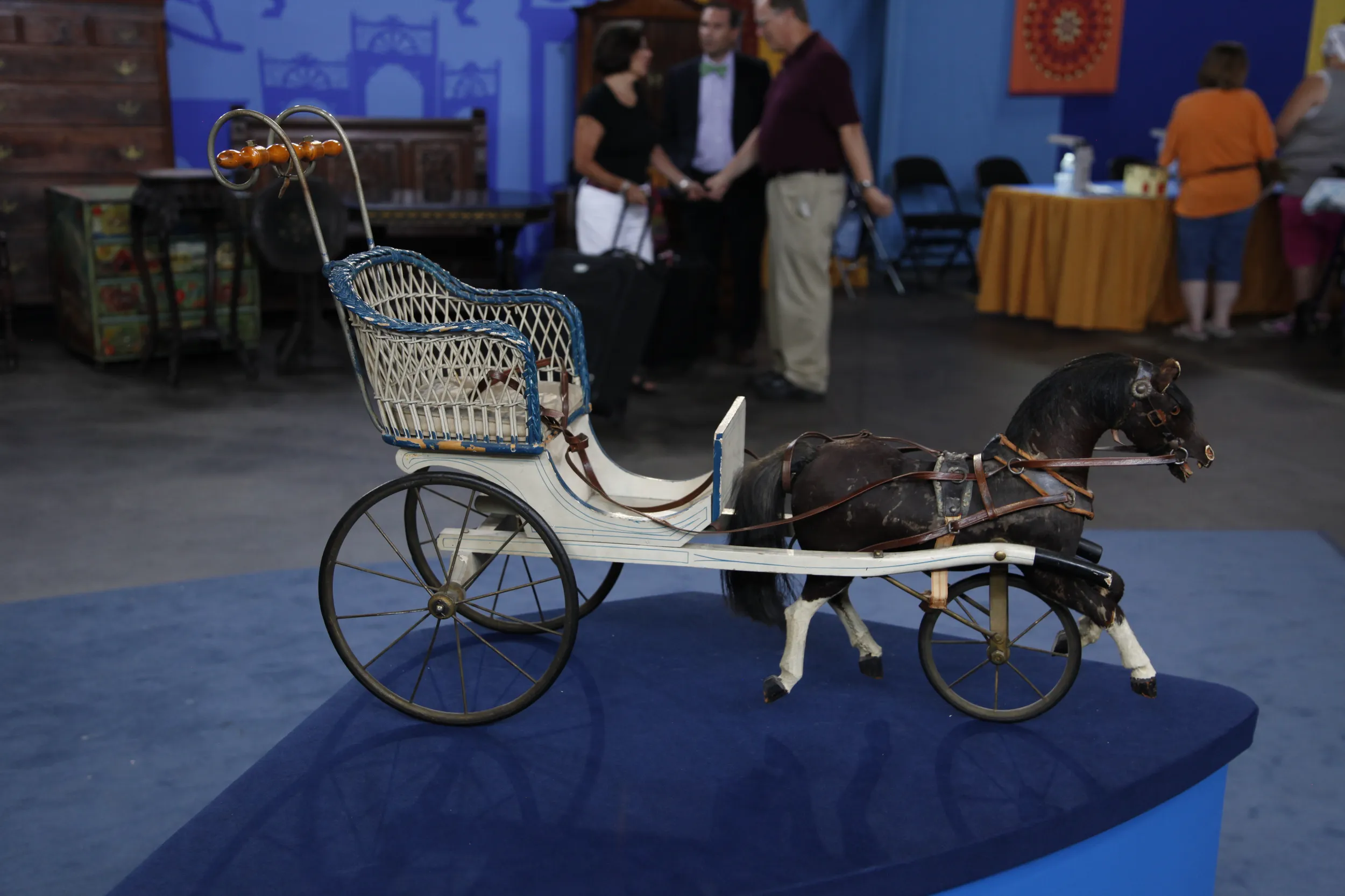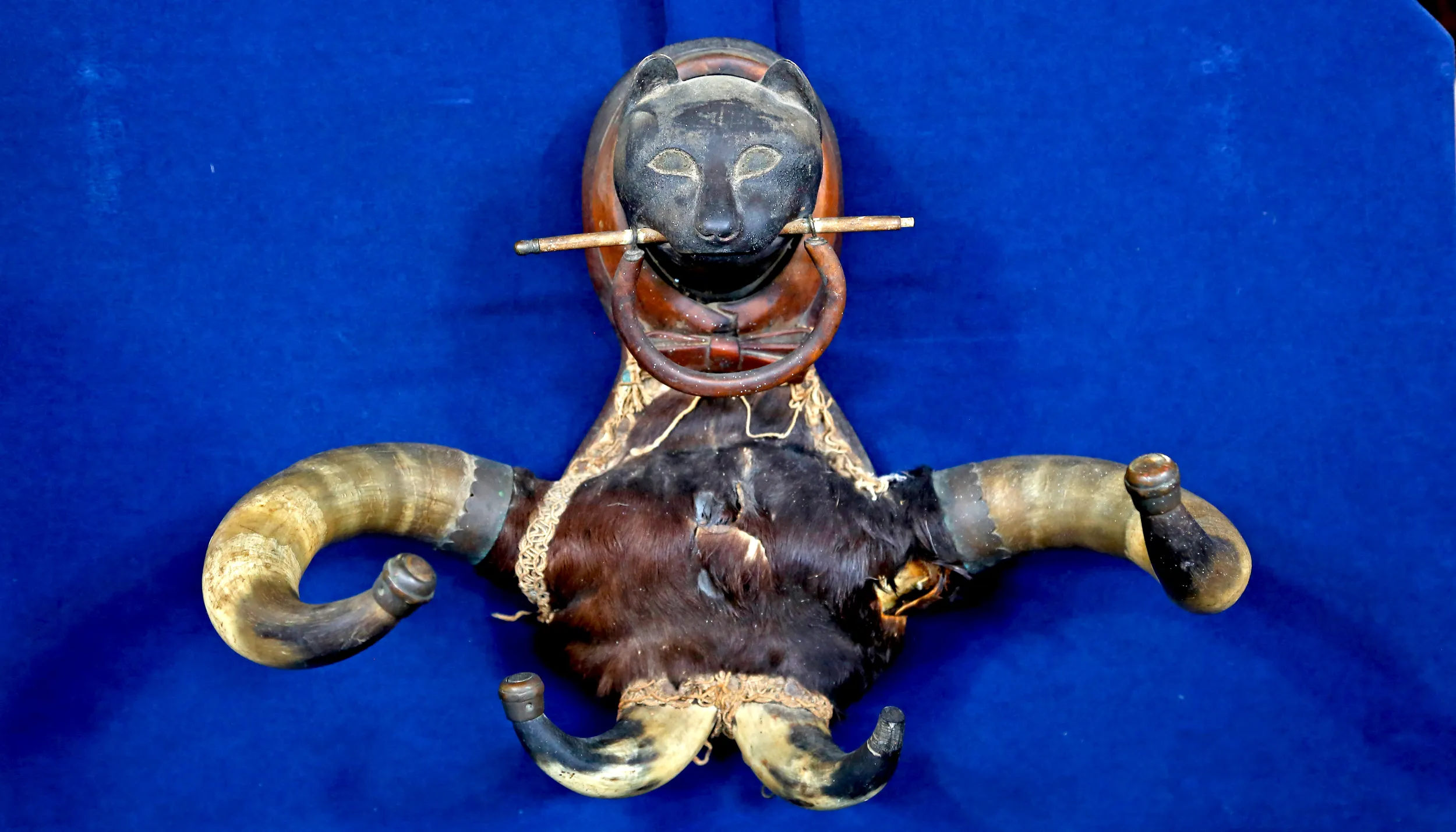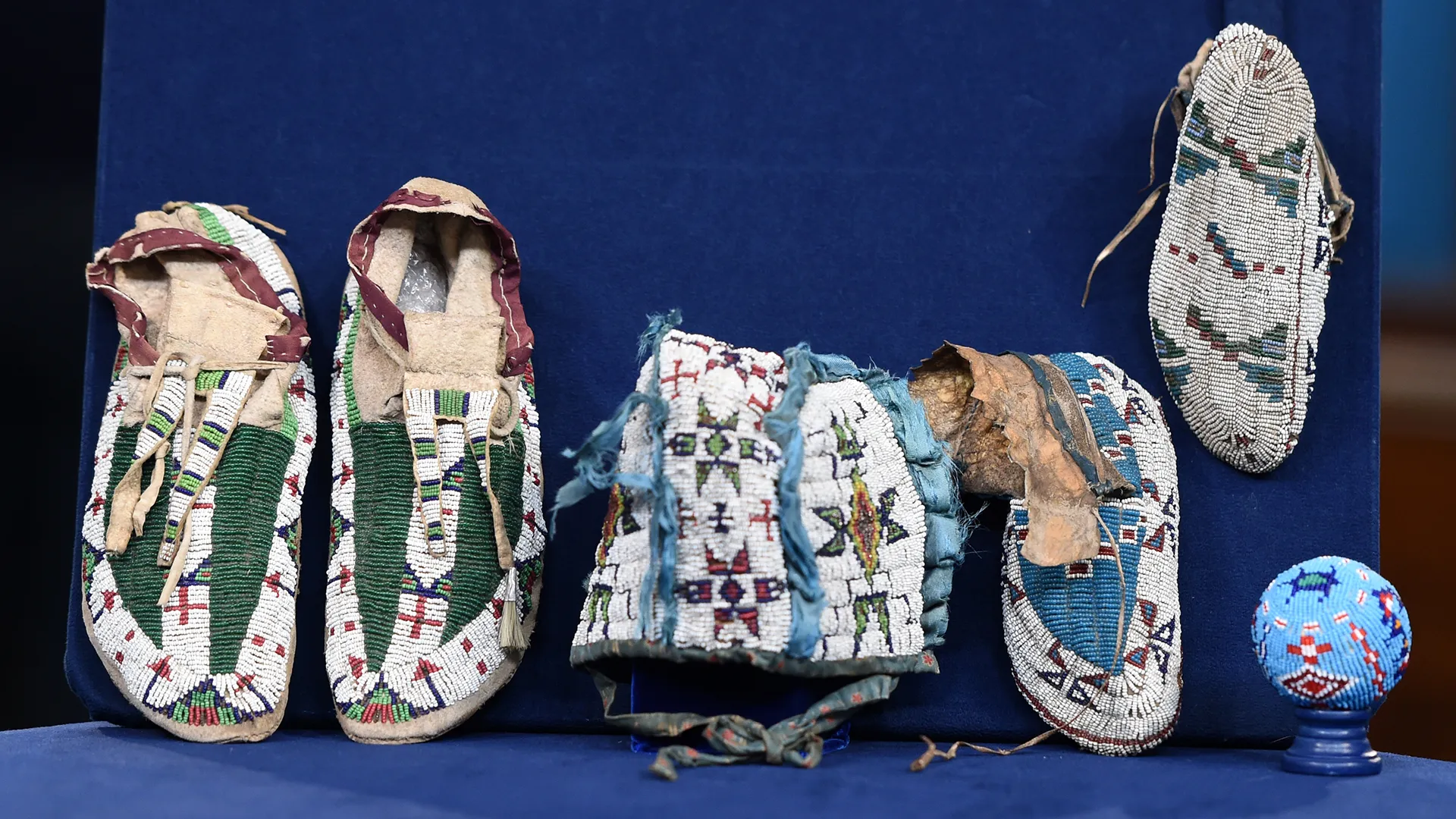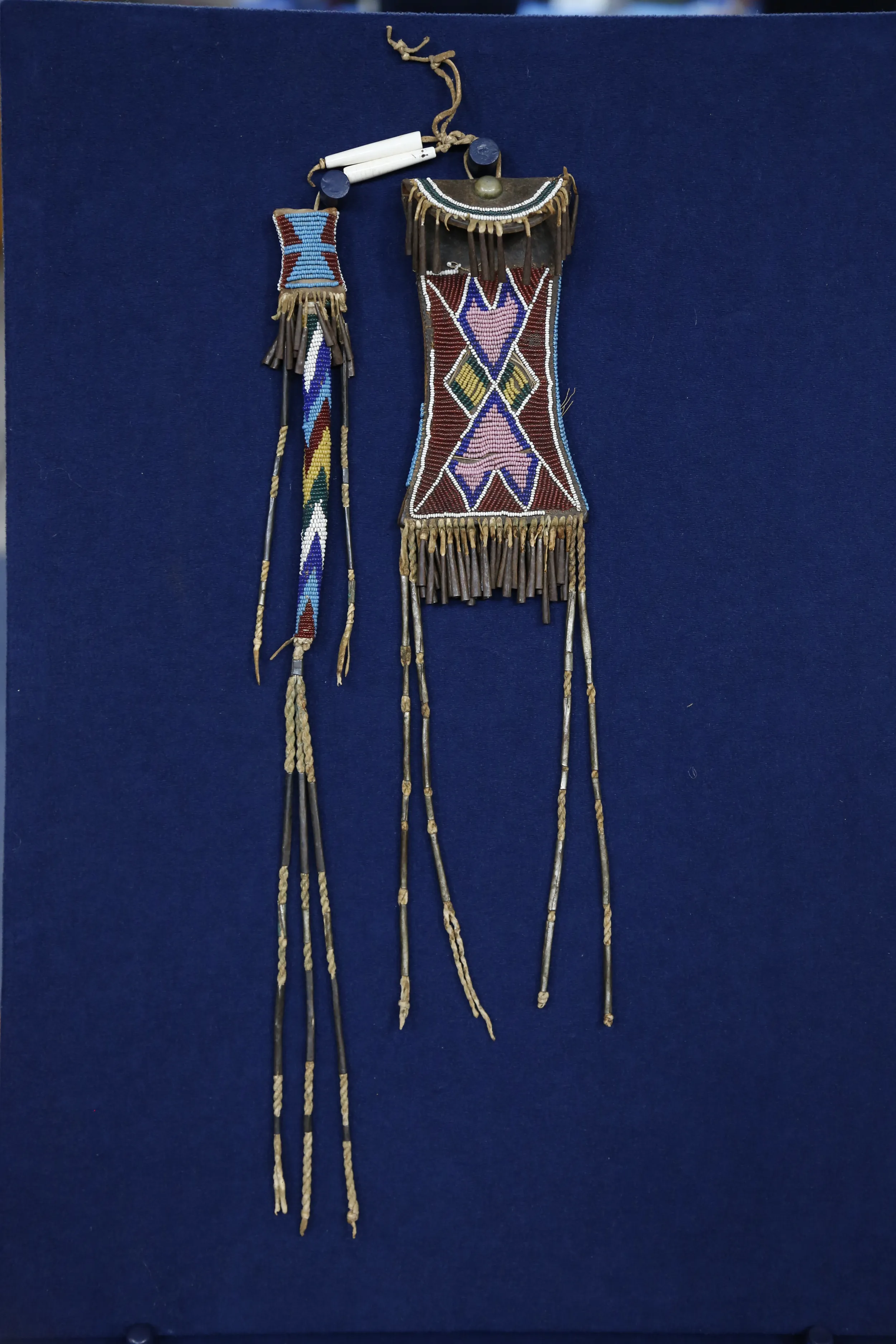GUEST: They were handed down through my family. Most of them came into the family about 1878. My great-grandmother lived in Baxter Springs, Kansas, and then she went back to Ohio to visit relatives and parents.
APPRAISER: Did she go back with some frequency to Kansas?
GUEST: I don't know, I think so.
APPRAISER: And what do you know about these pieces?
GUEST: Nothing. (chuckles)
APPRAISER: All righty. The bag that you're looking at up here was made by the Plains Indians, the Cheyenne. And it dates to about 1870, 1880. It's a very beautiful, very luxurious piece of leather with exquisite beadwork. The knife sheath represents the Blackfoot, and the Blackfoot were from Montana. Her travels took her into a region in a time, it was post Civil War... They were moving natives from their homes into reservation and Indian school settings. It was a time of turmoil for Native Americans. These pieces, they're highly collectible. This is probably one of the finest Cheyenne pipe bags. This is where a man would keep his pipe. It has a value, at auction, of $10,000.
GUEST: Oh, my gosh.
APPRAISER: It's a stunner. It is luxurious, the beadwork's exquisite, it's in great condition, it's supple. The knife sheath, $3,000 at auction. Highly collectible tribe, highly collectible object.
GUEST: Very surprised, very.
